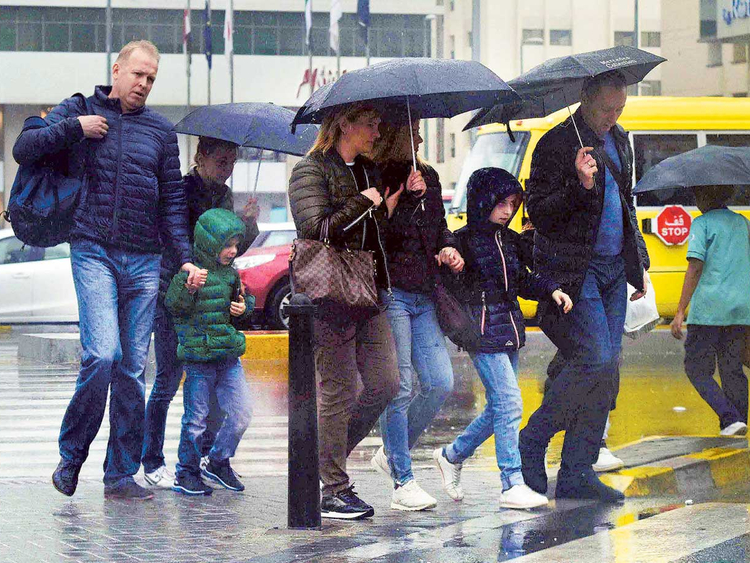
Dubai: More than two weeks of back-to-back cloudy and wet weather is not an unusual phenomenon for the UAE, forecasters said yesterday, but it might draw to a close on Monday, with a chance to appear again later in the week.
While it rains in the country during winter, overcast skies with intermittent showers for more than two weeks is not something residents commonly get to enjoy in the UAE. The continuous cloud cover is due to the different low pressures in the atmosphere that is affecting the region.
“Our area, including the UAE, is affected by the extension of the low pressure in the upper air, and the extension of low pressure in the surface and also there are clouds moving from the west over to the UAE. This kind of weather is normal for this time of the year,” Dr Ahmad Habib, specialist in meteorology at the National Centre of Meteorology and Seismology (NCMS), said.
“The wettest period of the year across the country is during winter, but the specific month varies. There are chances of rain in some years in January, in some years in February, in some years in March. The wettest month last year, for example, was March.”
Based on NCMS data, the average monthly total rainfall across the country from 2003 to 2015 was highest in the month of December at 18.8mm, followed by January at 10.6mm. April got the third place at 8.6mm followed by March at 5.6mm and February at 3.8mm.
In Dubai’s Meteorological office, February is considered the wettest month in the emirate, with an average of 25mm of rain. The expected number of rainy days during the month is five but has been as high as 12.
Rain falls in other months of the year but only in specific areas like in Al Ain in summer, or in Fujairah during the latter part of the year.
To enhance rainfall in the country, NCMS has conducted 55 cloud seeding operations since the beginning of the year. Dr Habib, however, said NCMS currently does not have scientific data on its current impact so far.
“Cloud seeding is only done to enhance rainfall. So since we have natural clouds and natural rain, we’re only trying to enhance it. Based on previous studies abroad and in the UAE, cloud seeding could result in rain enhancement of up to 10 to 12 per cent,” Dr Habib said.
The rain clouds are not here to stay. Chances of rain will drop by Monday afternoon and showers are only forecast on Monday morning in the eastern and southern parts of the country.
Monday’s weather will be partly cloudy with a probability of fog formation in internal and coastal areas.
Average temperature will be between 23C to 27C and will remain the same for the next three days.
The Arabian Gulf will be moderate, and rough at times, while Oman Sea will be moderate in general.













